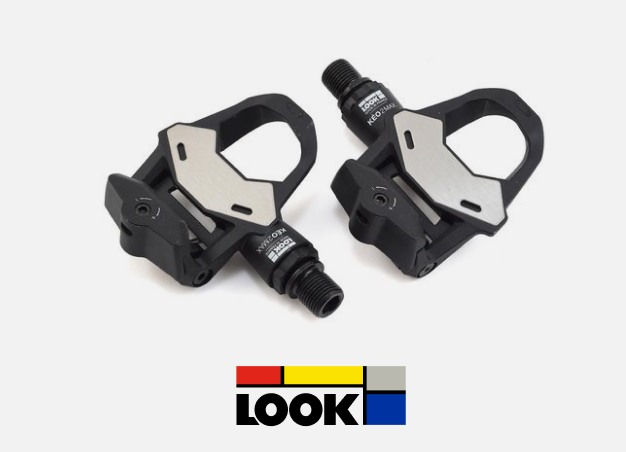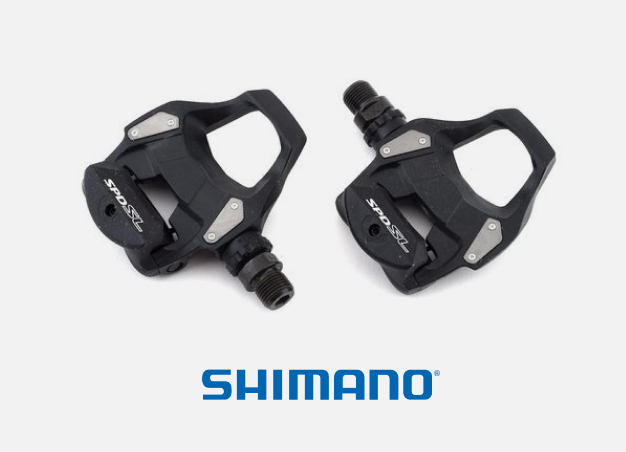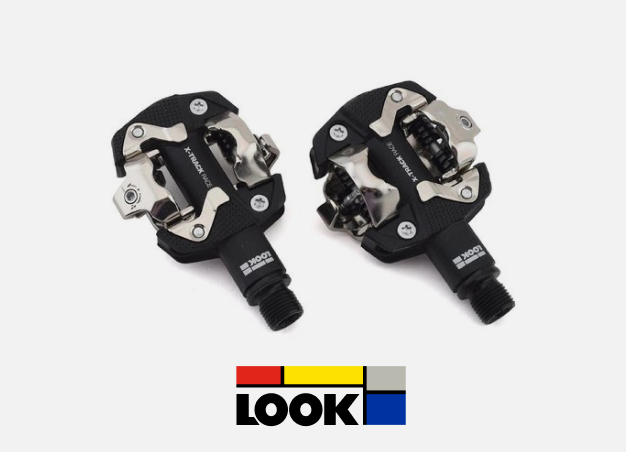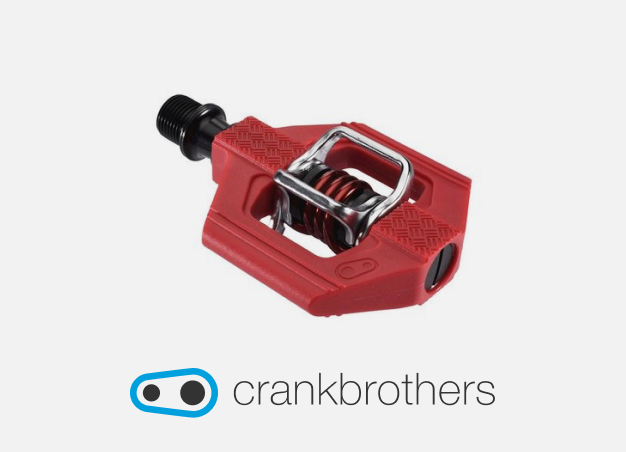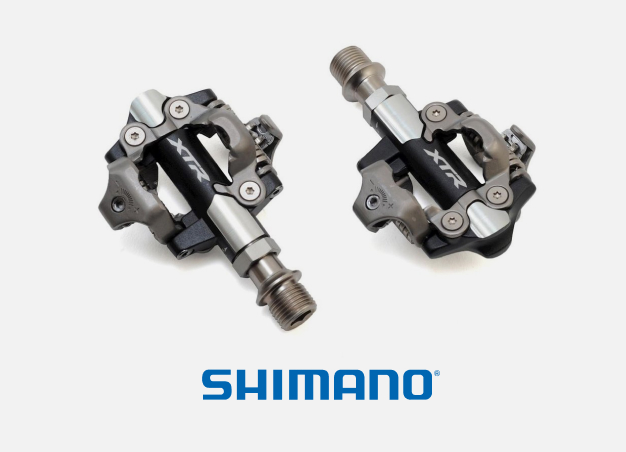Shoes and Pedals for the Road
Navigating shoe and pedal systems for maximum comfort, efficiency, and power.

Your shoe-to-pedal interface is extremely important. It is one of only three contact points between you and your bicycle, but, unlike handlebars and saddles, your pedals convert your work to power. This is why it's worth spending some extra time to find the right system for you. Ideally, your choice should be comfortable, easy to use, and help you feel connected to your bike in any riding conditions. Read on to learn more about pedal types and clipless systems!
Pedal Types
There are three types of road pedals: flat, clipped, and clipless.
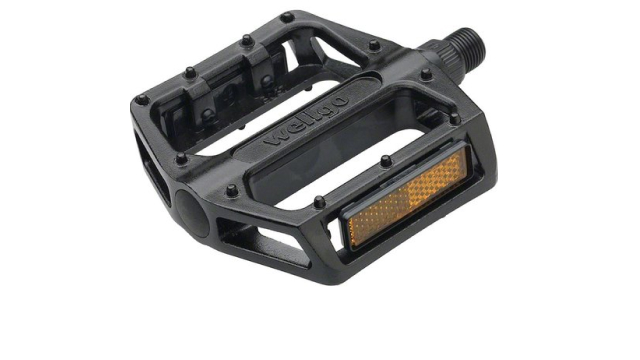
Flat pedal
Sometimes called platform pedals, flats come standard on many new bicycles (though higher-end bikes often require pedals to be purchased separately). Made of hard resin or aluminum, it's a simple design that does not require special footwear. Many are also equipped to add clips and straps if desired.
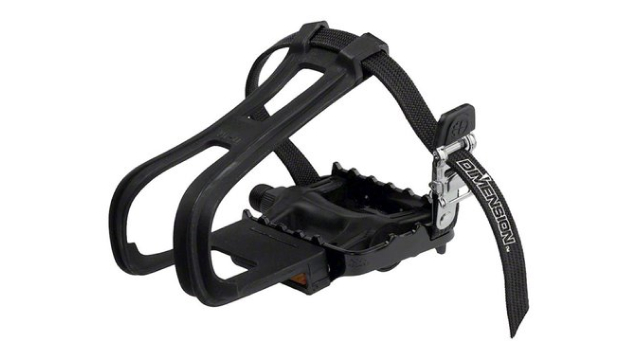
Clipped pedals
Sometimes called "toe-clips," these are flats with a simple foot-retention system including a velcro strap or plastic toe-clip and nylon webbing. Like flats, clipped pedals do not require special footwear. They help keep your foot on the pedal, but are not as efficient as a clipless interface and can be difficult to quickly enter and exit. Much of the time these are sold in two parts – as pedals and straps.
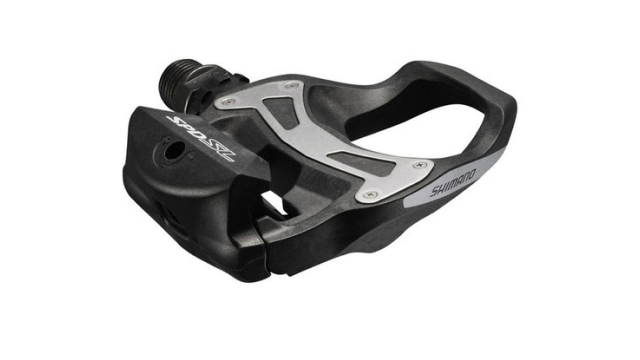
Clipless pedals
Clipless pedals combine maximum foot retention, easy and safe pedal entry/exit, and superior power transfer. The epitome of performance and comfort, clipless pedal systems can reduce foot fatigue, but have a small learning curve and require special footwear. Although some road cyclists start on flat or clipped pedals, most eventually graduate to one of the clipless interfaces, below.
Clipless Pedal Interfaces
Clipless systems consist of three parts: pedals, cycling shoes, and a removable cleat bolted into the bottom of the shoe. Most road-specific cleats attach with three screws, though some popular options use only two. These are not interchangeable. Since your shoe will either have two or three bolt holes, make sure your shoe, cleat, and pedal all work together.
Popular three-bolt systems include Look, Garmin, and Shimano SPD-SL.
Popular two-bolt systems include Look, Crankbrothers, and Shimano SPD.
Remember: pieces of two-bolt and three-bolt systems are not interchangeable, this includes Shimano's SPD-SL and SPD systems. The removable cleat screwed into the sole of your road shoe must match the clip mechanism on the pedal.

Clipless Shoes
Your shoes should keep you comfortable, injury-free, and ready to put down power no matter the road ahead or the miles behind. 3-bolt, performance-oriented road shoes are lightweight, aerodynamic, stiff to provide a stable platform for power transfer, and built from materials to regulate your foot temperature and adjust its fit for comfort. Two-bolt road shoes for commuting, recreational cycling, or indoor riding are usually less aerodynamic and a little heavier, but are much easier to wear while walking because their cleats are typically inset beneath the shoe's tread.
Clipless Cleats
Your new pedals will usually include clipless cleats, but the cleats eventually wear out and need replacing. When pedal entry and exit feels sloppy, or too easy no matter how you adjust your pedal's tension, it's time to replace your cleats. Check out our selection, here.

